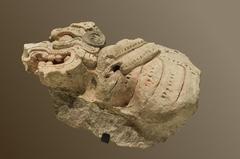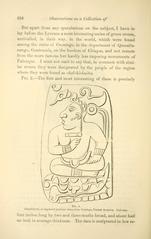Lagunas de Montebello National Park: Visiting Hours, Tickets, and Travel Guide
Date: 14/06/2025
Introduction
Lagunas de Montebello National Park, situated in the Chiapas Highlands near the Guatemala border, is one of Mexico’s most spectacular natural and cultural destinations. With over 50 dazzling karst lakes in shades ranging from turquoise to emerald, extensive pine-oak forests, and significant Maya archaeological sites, the park offers visitors a unique blend of breathtaking landscapes and living indigenous heritage. This guide provides comprehensive information on visiting hours, tickets, activities, accessibility, conservation issues, and cultural context to help you plan a rewarding, responsible visit.
Visitor Information
How to Visit
Lagunas de Montebello is located about 60 km from Comitán de Domínguez and roughly 70–80 km from San Cristóbal de las Casas. The park is easily reached by car, taxi, or organized tours from these cities. Public transportation is also available, though less frequent and may involve transfers.
Tickets and Opening Hours
- Opening Hours: Daily from 7:00 or 8:00 AM to 5:00 or 6:00 PM, depending on the season.
- Entrance Fee: Typically 35–70 Mexican Pesos per person (about $2–$4 USD); children and seniors may pay reduced rates. Fees may vary for guided tours or special events.
- Where to Buy: Tickets are available at the park entrance or through authorized tour operators.
Facilities and Accessibility
The park offers visitor centers, picnic areas, restrooms, and parking near popular lakes such as Lago Tziscao and Cinco Lagos. Some trails and viewpoints are wheelchair accessible, but much of the terrain is rugged and may not be suitable for all visitors. Basic amenities are available, and rustic cabins or eco-lodges can be found in Tziscao and Cinco Lagos, with more comfortable hotels in Comitán.
Historical and Cultural Background
Indigenous Heritage
Lagunas de Montebello has been home to Maya populations for millennia. Within the park, you’ll find two important Maya archaeological sites, including Chinkultic, which features pyramids and ball courts with panoramic lake views. Today, the park remains culturally vibrant, with Tzeltal, Chol, Lacandon, Chuj, and Tojolabal communities preserving languages, crafts, and subsistence traditions.
Colonial Era and Cultural Resilience
Spanish colonization in the 16th century brought profound changes, including forced relocations and religious conversion. Despite these challenges, many indigenous customs, agricultural practices, and spiritual connections to the land have endured.
Park Creation and Conservation Efforts
Established in 1959 as Chiapas’ first national park and declared a UNESCO Biosphere Reserve in 2009, Lagunas de Montebello protects 6,411 hectares of diverse ecosystems and cultural landscapes. The park is also recognized as Ramsar Site 1325, reflecting its global ecological importance (Lagunas de Montebello National Park - CONANP).
Natural Attractions and Activities
Lakes and Landscapes
- Lago Tziscao: The largest road-accessible lake, home to the Tziscao community, cabins, and restaurants.
- Cinco Lagos: A cluster of five interconnected lakes with vivid blue waters, ideal for photography, kayaking, and boat rides.
- Laguna de Montebello: The largest and most iconic lake, with swimming, hiking, and food stalls.
- Lagunas de Colores: Includes Agua Tinta, Bosque Azul, La Encantada, Ensueño, and Esmeralda, each with unique hues.
- Lago Internacional: Straddles the Mexico-Guatemala border, allowing visitors to walk between countries.
- Laguna Liquidámbar: A tranquil spot with food stalls and fewer crowds.
Outdoor Activities
- Swimming and Watercraft: Swimming is permitted in some lakes; kayaks and wooden balsas (rafts) can be rented.
- Hiking: Trails range from easy lakeside walks to more challenging treks through pine and oak forests. Guided hikes such as Sendero El Perol near Lago Pojoj offer educational experiences.
- Horseback Riding: Available along scenic forested trails and to cenotes.
- Wildlife Watching: The park supports over 277 bird species and mammals like jaguars and ocelots. Early mornings and evenings are best for wildlife observation.
- Camping and Cabins: Designated camping areas and rustic cabins are available, particularly around Lago Tziscao and Cinco Lagos.
Ecological and Cultural Interdependence
The park’s forests, lakes, and flora sustain both wildlife and indigenous communities, providing resources such as timber, medicinal plants, and food. The lakes are also central to local mythology and rituals, with many considered sacred and the subject of legends about their vibrant colors. The resplendent quetzal, a bird revered in Maya lore, still inhabits these cloud forests.
Conservation Challenges
Deforestation and Land Use
Between 1992 and 2014, cultivated land within the park increased by 13.4%, while forest cover declined by 67%, largely due to agriculture and cattle raising. These changes threaten native habitats and disrupt the lakes’ delicate hydrological cycles.
Lake Eutrophication
Since 2003, several lakes have shown signs of eutrophication, mainly from nutrient runoff, urban waste, and deforestation. Algal blooms and water quality degradation now affect lakes like San Lorenzo, Bosque Azul, and La Encantada.
Socioeconomic Pressures
The livelihoods of local communities often depend on agriculture and cattle, creating a complex balance between conservation and economic needs. Tourism provides income but also increases pressure on natural resources.
Management Strategies
Efforts include reforestation, sustainable agriculture, waste management improvements, and community-based tourism. Ongoing monitoring of chlorophyll a and microbial communities helps track lake health and guide interventions.
Cultural Experiences and Responsible Tourism
- Indigenous Markets and Festivals: Visit markets in Comitán and La Trinitaria for textiles, pottery, and cuisine.
- Cultural Tours: Local guides offer tours sharing indigenous perspectives on ecology and history.
- Community Tourism: Participating in handicraft workshops and guided hikes supports sustainable livelihoods and cultural preservation.
Best Time to Visit
- Dry Season (Nov–Apr): Best for vibrant lake colors, clear weather, and easy trail access.
- Rainy Season (May–Oct): Trails may be muddy and colors less vivid, but the park is lush and less crowded.
Nearby Attractions
- Palenque Ruins: One of Mexico’s most renowned Maya archaeological sites.
- Comitán de Domínguez: A charming town with hotels, restaurants, and cultural events.
- La Trinitaria: Known for indigenous crafts and community festivals.
Safety and Practical Tips
- Stay on marked trails for your safety and to protect the environment.
- Be cautious around lakeshores, which can be steep or slippery.
- Bring water, snacks, sunscreen, insect repellent, and layers for changing weather.
- Most vendors do not accept cards—bring cash.
- Download offline maps, as cell coverage may be limited.
- Ask permission before photographing people or sacred sites.
Frequently Asked Questions (FAQ)
Q: What are the visiting hours?
A: The park is open daily from 7:00 or 8:00 AM to 5:00 or 6:00 PM.
Q: How much are entrance tickets?
A: Entry costs range from 35–70 MXN per person, with discounts for children and seniors.
Q: Can I purchase tickets in advance?
A: Tickets are sold at park entrances. Group tours can be booked through local operators.
Q: Are guided tours available?
A: Yes, local guides offer nature hikes, cultural tours, and boat rides.
Q: Is the park accessible for people with disabilities?
A: Some areas are accessible, but many trails are rugged. Inquire in advance for details.
Q: Is swimming allowed?
A: Yes, in designated lakes. Always check local regulations.
Q: Are pets allowed?
A: Pets are generally not permitted to protect wildlife.
Visuals and Resources
For an enhanced experience, explore official maps, virtual tours, and high-quality images on the park’s website. Descriptive alt text such as “Lagunas de Montebello visiting hours view of Lago Tziscao” is recommended for accessibility.
Conservation and Your Visit
Lagunas de Montebello’s beauty and biodiversity are under threat from deforestation, agricultural expansion, and eutrophication. By choosing local guides, respecting regulations, and minimizing your impact, you help preserve this unique landscape for future generations.
Call to Action
Plan your trip to Lagunas de Montebello National Park to experience its unmatched blend of stunning lakes, Maya history, and vibrant indigenous culture. Download the Audiala app for up-to-date information, maps, and guided tours. Support sustainable tourism by engaging with local communities and following responsible travel practices. For the latest updates, follow official tourism channels and explore additional resources on our website (Lagunas de Montebello National Park - CONANP).
Sources and Further Reading
- Lagunas de Montebello National Park: Visiting Hours, Tickets, History, and Travel Tips, 2025, (Lagunas de Montebello National Park - CONANP)
- Lagunas de Montebello National Park: Visiting Hours, Tickets & Top Attractions in Chiapas, 2025, (Lagunas de Montebello National Park - CONANP)
- Lagunas de Montebello National Park: Visiting Hours, Tickets, and Top Attractions in Chiapas, 2025, (Lagunas de Montebello National Park - CONANP)
- Lagunas de Montebello National Park: Visiting Hours, Tickets, and Conservation Challenges, 2025, (Lagunas de Montebello National Park - CONANP)

